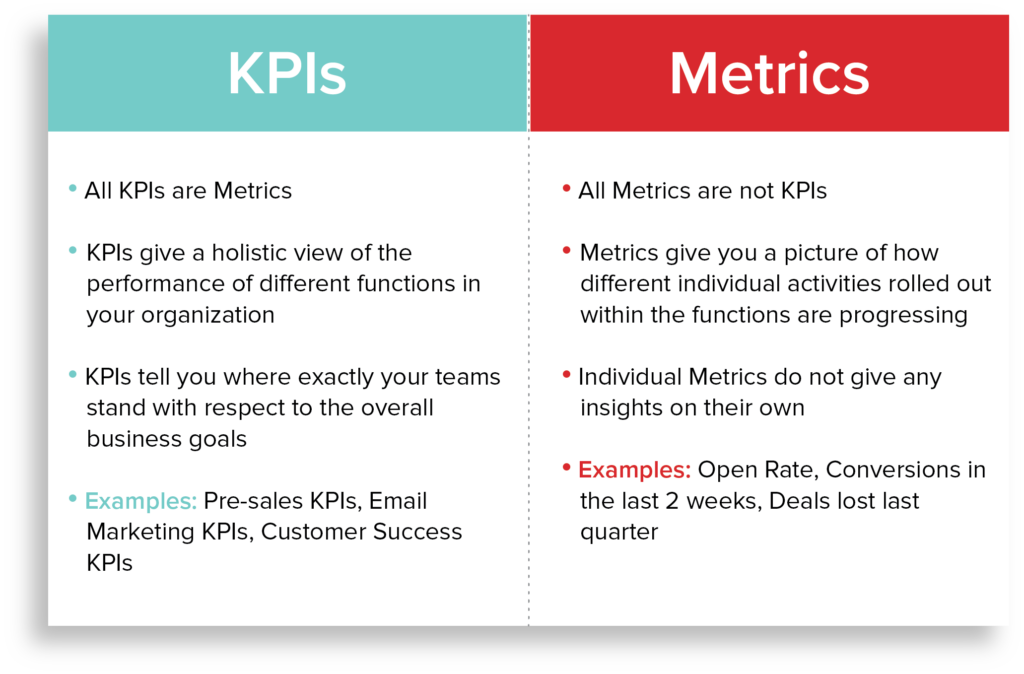How to Measure Marketing Performance
06/02/2023
Marketing is an essential aspect of any business. However, it can be challenging to determine the effectiveness of marketing strategies without the proper measurement approaches and solutions. Measuring marketing performance is crucial for brands to understand which investments are driving results (and which ones are not). Whether you’re a small business owner or a marketing professional working for a large brand, understanding how to measure your marketing performance will help you make more informed decisions and achieve your business goals.
In this post, we will cover the best ways to measure marketing performance (with specific measurement and KPI examples), how to develop the right marketing KPIs based on your brand’s goals and objectives, and the role marketing attribution plays in measuring marketing performance. Let’s dive in!
What is the difference between metrics and KPIs?
Before we get into the best ways to measure marketing performance (with KPI examples), it is important to distinguish the difference between metrics and KPIs. Marketing metrics and key performance indicators (KPIs) are both important tools used to measure and evaluate marketing performance– but they differ in their scope and purpose.
Marketing metrics are quantitative data points that provide insights to various aspects of marketing performance, such as website traffic, email open rates, or social media engagement. These metrics deliver a snapshot of specific marketing tactics and their outcomes.
On the other hand, KPIs are strategic metrics that align with overall business objectives and serve as a measure of success. They are carefully chosen to reflect the critical goals and performance targets of the specific brand, and provide a more holistic view of marketing effectiveness. Examples include revenue growth, customer acquisition rate, customer lifetime value, market share, etc.
While marketing metrics offer tactical insights, KPIs provide a broader, strategic perspective on marketing performance and its impact on the business as a whole. Simply put, KPIs are tied to specific goals while metrics are actual data points. When these metrics and data points are aggregated and aligned to business strategy, they make up KPIs.

What are KPIs to Measure Marketing Performance?
When it comes to measuring marketing performance, determining which key performance indicators (KPIs) best capture the marketing goals of your brand is very important. There are several different KPIs that can provide valuable insights into the effectiveness and success of your brands’ marketing efforts, such as:
Return on Investment (ROI)

One of the most important KPIs for measuring marketing performance is Return on Investment (ROI), which measures the financial return generated from marketing efforts relative to the cost of those efforts. This KPI helps assess the profitability and efficiency of marketing campaigns, and also aids brands in planning their strategies and budgets for the future. To calculate ROI, divide revenue by marketing cost.
Sales Growth

One of the best ways to measure the effectiveness of your marketing strategy is by measuring the growth in sales. With this KPI, you’re looking at how much of the total revenue was influenced by marketing investments.
Customer Acquisition Cost (CAC)

Another crucial KPI is Customer Acquisition Cost (CAC), which measures the cost required to acquire a new customer. Monitoring CAC kelps gauge the effectiveness of marketing channels and campaigns in attracting and converting new customers. This KPI is calculated by dividing the total marketing investment by the number of customers acquired.
Conversion Rate

Conversion rate, both for website visits and leads generated, is another essential KPI that measures the percentage of visitors or leads that convert into desired actions, such as purchases or sign-ups.
Qualified Leads

This marketing KPI measures the leads that have engaged with your brand and could become a more serious prospect if the relationship is nurtured through marketing content, outreach, etc.
Social Media Reach/Engagement

Measuring social media engagement (likes, comments, impressions, etc.) can help you analyze the success of your social media posts and plan your social media content for your target audience– as well as build a strong brand presence online. Some social media sites already have built-in tools that will track and analyze this information for you (but using an objective measurement source like OptiMine is more reliable and is completely unbiased).
Email Marketing Performance

Measuring and analyzing email statistics such as open rates, click rates, unsubscribe rates, etc. will help you see where you can improve your email marketing strategy.
Organic Traffic

Organic traffic measures the number of people who have found your website on their own. SEO optimization is what increases organic traffic, so refine your SEO strategy accordingly.
Search Rankings

Also related to SEO and organic traffic, search rankings measure your website’s placement in search engines. If you increase your website’s search rankings via SEO optimization, your organic traffic will follow.
By tracking and analyzing the KPIs that resonate with your brand’s marketing goals, you can gain valuable insights into the performance and effectiveness of your marketing efforts, allowing you to make data-driven decisions and optimize your marketing strategies to achieve ultimate success.
How to Develop Marketing KPIs
Now that we’ve covered the most common KPIs for measuring marketing performance, we’ll go through the steps of how to actually develop the specific marketing KPIs that are the right fit for your brand:
1. Define Goals
Start with creating a marketing strategy by examining your brand and its goals. You need to determine what you want to achieve (ie.g. improve brand awareness), and what best way to go about that is (for example: build SEO by increasing blog post frequency → include KPIs on page views and search engine referrals)—otherwise, KPIs are meaningless.
2. Determine Which Metrics Matter Most
Stay laser-focused on a handful of KPIs so they’re achievable and mean something—being vague will lead to failure. Be careful not to have too many metrics, or otherwise it can easily get convoluted.
3. Look at Historical Data
The whole point of developing marketing KPIs is to ultimately help your brand succeed, so look at your previous data and based on that, decide where / how you want to make improvements.
4. Be Practical
Be practical about what your team can achieve based on the resources you have, historical data, and consumer behavior. Reality is your friend—focus on what will work.
And You’re Ready to Go!
If you follow these steps, you’ll have a collective of purposeful KPIs that you (and your team) will be motivated to achieve. Be sure to measure them regularly!
The Role of Marketing Attribution
Marketing attribution is the way in which advertisers determine how their marketing strategies contribute to sales, conversions, or other KPIs– and plays a huge role in measuring overall marketing performance.
The issue facing the entire marketing community is that it is extremely difficult to constantly monitor, measure, track, analyze, and report on all of the specific marketing KPIs that relate to your brand’s business goals and objectives. This is where marketing attribution really comes into play.
It All Starts with the Right Tool
The right marketing attribution solution will be your one-stop-shop for measuring KPIs—all in one place. But what exactly is it that makes a solution (like OptiMine) the right tool for your brand?
- Future-Proof: We are in a major era of privacy-driven data disruption. Attribution approaches that require PII are no longer safe, accurate nor reliable moving forward. OptiMine’s solution uses no PII data whatsoever and delivers a 100% future-proof solution for brands.
- Agile: Speed matters now more than ever. The brands with the best intelligence combined with speed will outperform those brands who lag in these areas. OptiMine delivers the fastest solution in the market, providing the quickest ramp to ROI, and promises speed and flexibility for the long haul.
- Comprehensive Cross-Channel Measurement & Optimization: The days of having to combine MTA and marketing mix modeling (“MMM”) solutions to get complete marketing and conversion coverage are over. OptiMine provides a truly unified measurement and optimization solution that covers both traditional and digital marketing across online and offline conversions all in one single solution and modeling methodology. No more conflicting answers, measurement gaps, and solution complexity. AND we help interpret the results so you can take action.
The time to future-proof your marketing performance measurement is NOW. OptiMine’s deeply experienced team can guide you and your organization through the change, solution adoption and analytic support to achieve greater success. Contact us today to learn more!

